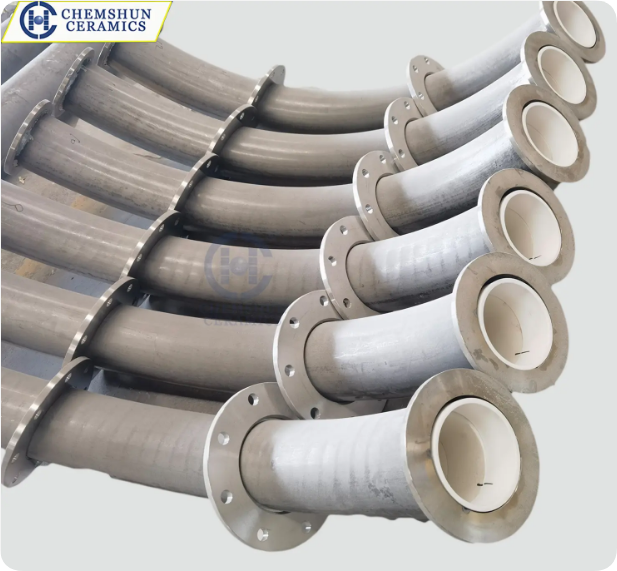According to the fixing method of wear-resistant ceramics, ceramic pipes can be roughly divided into three types: patch-type wear-resistant ceramic pipes, stud-welded wear-resistant ceramic pipes and sleeve-type wear-resistant ceramic pipes.
1. Patch-type wear-resistant ceramic pipes: This pipe uses high-temperature resistant strong adhesive to stick alumina or zirconia wear-resistant ceramic tile on the inner wall of the pipe, and then forms a firm anti-wear layer after heating and curing.
Features: Simple installation, easy to replace, and different ceramic sheets can be selected according to the wear conditions of different parts of the pipe, while ensuring the performance of the pipe and reducing the cost as much as possible. Although patch-type ceramic pipes have many advantages, their disadvantages are also obvious. The fixation of ceramics depends entirely on ceramic adhesives. Once the adhesive viscosity decreases or disappears in extreme environments such as high temperature, the ceramics are prone to fall off. Therefore, it is necessary to pay attention to the use temperature or choose high-temperature resistant ceramic adhesives.
2. Stud welding wear-resistant ceramic pipe: This pipe is made by sticking wear-resistant ceramics on the inner wall of the pipe with strong adhesive, and the ceramic lining is firmly welded to the inner wall of the steel pipe through the small holes with the spot welding process. To protect the welding points, a ceramic cap is screwed on it.
Features: Reliable fixation, high temperature resistance, and can operate normally in a high temperature environment of 500℃.
3. Sleeve-type wear-resistant ceramic pipe: This pipe is installed and fixed by measuring the size of the steel pipe in advance, then sintering the whole pipe, and then inserting it into the steel pipe.
Features: Few connection gaps, smooth inner wall, avoiding hanging material blockage and material leakage, generally suitable for pipes with special needs.
Post time: Apr-19-2025


